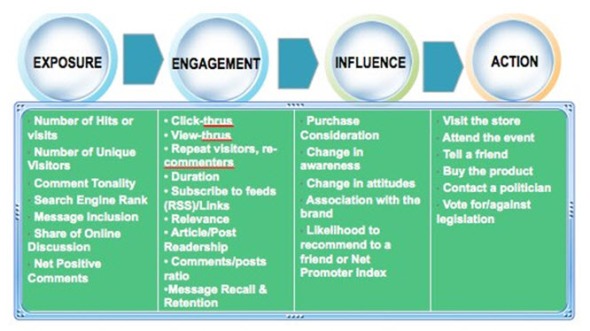
Marshall Sponder, Source: Entrepreneur.com
This is a guest post from The A-List podcast guest Marshall Sponder. Marshall is the founder of Webmetricsguru.com, one of the most influential and viewed blogs on Web Metrics, Web Analytics, Social Media and Search Marketing. He writes a monthly column for Entrepreneur.com on leveraging online marketing technologies that help businesses succeed in a challenging economy. Marshall maintains his own Analytics Consultancy, NOW-SEO, and is an Emeritus Director of Social Media the Web Analytics Association. Marshall also writes ArtNewYorkCity.com, which covers the New York Art world along with his own art; Smartmobs.com and BigGreenBlog.com as well.
I recently finished the first leg of a long journey in a quest to help create an “Influence Scorecard,” but stayed away from formulas that could be used to determine influence. Yet, almost two years ago, Edelman published a Distributed Influence paper that started by treating Blogs as Magazines and ended by suggesting we define influence of a blog / blogger by the amount of search rankings it has and a formula for Influence (without specifying how the quality of attention and audience would be determined).
The Edelman paper was quickly forgotten (by me), a found a post about finding the right signals to rank search results where it was postulated that search engines collect a lot of signals from our searching, but it’s filtering and applying the right signals that makes search results satisfying to the searcher and the process was still manual though it should be automatic, similar to how Amazon automatically tests and adjusts advertising and feature placement, on the fly.
Meanwhile, Public Relations Gurus, in particular, K.D. Paine, questioned the value of “eyeballs” and should instead go after share of “SOC” or “Social Media Conversation,” ranking, or authority and suggested “BRP” or “Blog Ranking Points” in a formula that looks like this:
CSoC = Social Media Budget / SOC
Where CSoC (Cost per Share of Discussion) is equal to the total Social Media Budget divided by your Share of Discussion.
Not to be outdone, MetricsMan published its own model with formulas for Social Media Measurement (of Influence) where Exposure, Influence and Action taken as a result of the public relations effort can be measured in a grid (see below) – on the face of it, this model of influence measurement is fairly easy to implement as far as exposure, but gets much harder to qualify when you get past “engagement” and onto “influence.”

By the end of 2008, Influence got defined as “The Size of the user base subscribed to your content,” by PR-Squared. But Media Philosopher closed out 2008 with a post (and meal) fit for a king and compared Influence to a recipe for Fois Gras or Duck D’Orange.
In 2009, Twitter became ascendant and SixtySecondView developed an influence formula to rank celebrities via Twitter.
The key variables we looked at for the INFLUENCE tables are a combination of the number and authority of someone’s followers together with the frequency of people name pointing an individual (via @username) and the how many times an individual’s posts are re-tweeted. Other attributes were included in the final score but were given a lower weighting.
…Ashton Kutcher may be the most popular figure on Twitter but Jonathan Ross (he’s a kind of UK version of Jay Leno for my American friends) is the most influential and most engaged.
The results were sometimes different than we might expect, which is good, since many times, the results of these formulas were the same with and without applying formulas.
But in 2009 we saw several agencies put forward their own formulas for determine Influence and Engagement and 123 Social Media has a good summary of many of the most important studies and formulas being proposed; almost all the studies contain formulas that are locked into a particular vendor or vendor’s methodology, which limits its usefulness.
Towards the end of this year The BrandBuilder made fun and parodied several social media experts, along with the formulas they came up with, while acting just like another expert. One of the formulas being made fun of is
So, within two years, Social Media Influence grew up, then made fun of itself.
But it wasn’t till I read the Net-Savvy Executive blog the Golden Age of Influence began, with an introduction to the Digital Footprint Index created by the Zócalo Group (with DePaul University) and Influence was a by-product:
Evaluate a brand’s online presence in three dimensions: Height, which represents the total volume of brand mentions; Width, based on consumer engagement with online content; and Depth, based on message saturation and sentiment.
As I mentioned, in the Influencer Summit I just finished, we could have produced and Influencer Formula – but we stopped because anything we’d come up with today would yield inaccurate results. But I bet, in a few years, we’ll have Influencer identification and ranking, fixed; till then, enjoy the Influencer formulas I provided in this article, but continue to take them all with a grain of salt.



